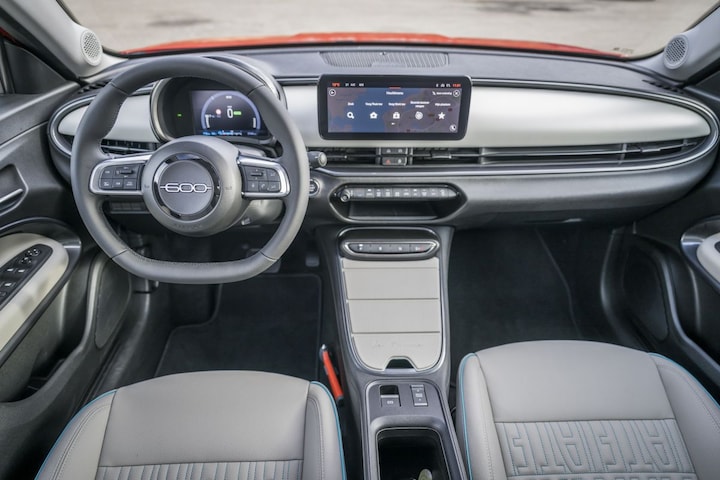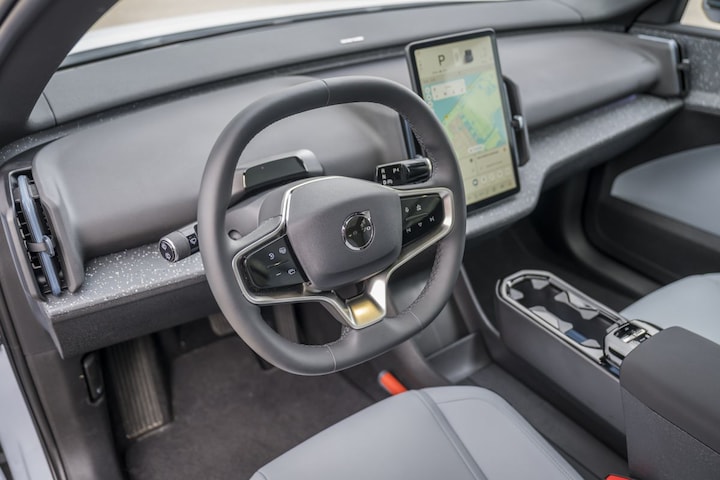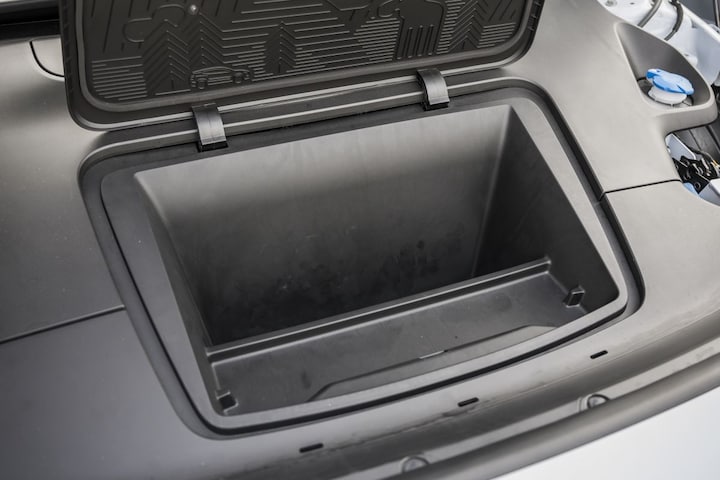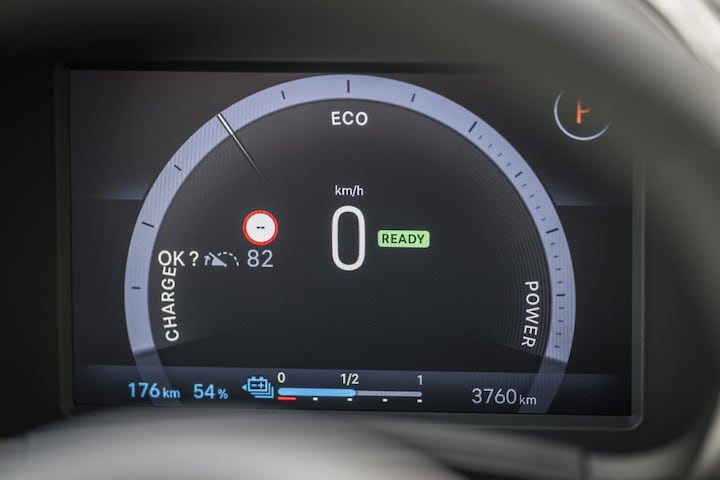Offering more doesn’t make much better
More than one and a half times the capital for roughly the same money? Yes please! At least, that’s what you’d think. But the new Fiat 600e proves compared to the much more powerful Volvo EX30 that significantly less power sometimes does not have to be such a big disadvantage.
At Stellantis they are currently rolling out electric cars at a rapid pace and the big secret behind that great decisiveness is that the cars are very similar underneath. They all have the same 51 kWh net battery pack and the same 156 hp and 260 Nm strong electric motor, which is in all cases mounted on the front axle. The cars are therefore 90 percent identical, but the 10 percent that differs can make all the difference. That is good news for Stellantis’ latest achievement: the Fiat 600e. At the same time, the competition is of course not standing still and one of the most dangerous newcomers seems to be the new Volvo EX30. This car has been attracting a lot of attention since the first rumors. And on paper it all looks fantastic. Because a Single Motor Extended Range with nice equipment is available for around €45,000. Then you have a car with 272 hp, a 64 kWh net battery and a range of 480 km. In short: on paper you get much more value for around €4,000 extra.
Crushing in proportion
And in all honesty: the Fiat 600e doesn’t feel particularly fast by electric standards. 156 hp and 260 Nm are very modest numbers in 2024 and you only get those maximum values if you switch on Sport mode or use the kickdown resistance in the pedal. Via Normal and Eco you limit the electric motor to xxx hp/xxx Nm and xxx hp and xxx Nm respectively. Especially in Eco mode, the Fiat does not even pull a tissue from the packaging. Unless you pedal through that kickdown resistance, but then that’s it. The good news is that it does not really matter for an electric motor whether you use 10 or 100 percent of the available power: there is no noise and there is no need to switch. So although it doesn’t go fast, the electric motor works smoothly and because you don’t have to lug around a huge battery, you can also get quite far on a kilowatt hour, which means that the range in practice is a creditable 300 kilometers. It’s a shame that the car itself always gives a range of 400 kilometers when fully charged, while that is really not realistic. Also a pity; Even in B mode, the Fiat does not really brake strongly on the electric motor. If you want to drive with a pedal, you will have to think far ahead and you can only come to a complete stop with the brake pedal.

The FIat 600e interior is quite nice, especially as La Prima
The Volvo does offer one pedal functionality and can therefore come to a stop without touching the pedals if desired. In addition, recuperation is also somewhat stronger, so you need less foresight to avoid having to use the brake pedal. It is a pity that the self-delaying part really seems to be in the top millimeter of the accelerator pedal. A little more effort to dose things would be welcome, but that could perhaps be improved in an over the air update. But then the power goes from the Fiat to the 272 hp Volvo and it feels like you’re being shot with a rocket. Of course, you don’t always have to go full throttle, but it’s nice to know that, if you want, you can merge right to the front of the line on the highway. Fine. Less nice: consumption. Even with a calm driving style, the EX30 on sports tires barely gets below 21 kWh per 100 km and that is really very high for a B-segment crossover. It also means that the Volvo, despite a larger battery, has an almost identical practical range as the Fiat 600, so you will be back at a charging station after 300 kilometers. There, the EX30 can fast charge up to 153 kW, one and a half times as fast as the Fiat, but because the consumption is so much higher, the number of kilometers you can charge in a minute is unfortunately not one and a half times as high.
Striking tire choice
Part of the difference in consumption is undoubtedly explained by the significantly higher weight, but also by the choice of tires. The EX30 in this test is equipped with remarkably sporty ContiSportContacts 6. Less good for consumption, but good news for the handling because the EX30 drives really fantastic on it. Due to the high weight, you will notice that the springs and dampers are a lot stiffer than those of the Fiat, but the adjustment of the shock absorbers has been excellently chosen so that comfort is good and road holding is excellent. The EX30 has exactly that unyielding feeling that is so recognizable from Volvos, but without the heavy turn-in. It provides an excellent compromise, allowing the EX30 to turn indecently fast, has predictable handling and feels nice and playful thanks to the rear-wheel drive. Big kudos!

The Volvo is a little nicer, but it doesn’t make much difference.
At Fiat they have opted for less inspiring handling. This is partly dictated by the fact that the drive is on the front wheels. Less inspiring, however, does not mean bad, because the 600e actually drives very pleasantly. The steering is light, quite distant and the chassis has an above-average flexibility. Ultimately, there is less grip than in the Volvo, but because the Fiat weighs 1,495 kilos compared to the 1,750 kilos of the EX30, the Fiat initially feels a bit more agile. After all, weight that is not there does not need to be set in motion.
Remarkably spacious
For a B-segment SUV, the Fiat 600e is fairly spacious. Because the electric motor is in the front, the Fiat 600e has no frunk, but the rear luggage compartment does have a double floor, so you can neatly store the charging cable there. There is room for 360 liters of luggage in the back, which is a decent value for the segment. But the big surprise is the back seat. In relatively compact cars, especially if they are electric, it sometimes has a somewhat uncomfortable seating position, but not in the Fiat. You sit neatly upright, with sufficient support and sufficient head and leg room. Up front, Fiat is clearly taking all the lessons that other Stellantis brands have learned to heart. So there are physical buttons for the air conditioning, a cluster of shortcut keys under the central touchscreen and although that screen is still quite slow, it can be easily configured. So put everything you use a lot on the home screen and there is little reason to be annoyed. Even better: all existing safety systems can be linked to a button and if you then press it for a few seconds, you immediately switch off all those systems.

A frunk in the Volvo, but it’s not much use.
If only the EX30 had a button like that. Or other buttons. Instead, just about everything you can operate is hidden in the central touchscreen. That screen runs on Google software and the good news: it works quickly and clearly. But it is also the only screen you have, because unlike in the Fiat, you do not have an extra screen in front of your nose. So if you want to know how fast you are going, you have to look at the central screen. But if you do that, the car starts beeping that you are not looking at the road. Now the system can be turned off, but you first have to go through a few menus. Very annoying and in this way the system does exactly the opposite of what it intended to do. The advantage of the urge to economise is that the interior does look tasteful. The materials and build quality are not much better than Fiat, but you do have the feeling that you are in something special. At least: in the front. It’s not much of a party in the back. On the Volvo backseat you have exactly that strange, constricted seating position that is conspicuous by its absence in the Fiat. The luggage space does not differ much. Here too we see a double bottom at the back and the EX30 even has a frunk. However, you can just fit your wallet in it and then that’s the end of it, so Volvo doesn’t earn any points with that.
More or less choices
If your wallet is still too thick, know that there are plenty of options at Volvo to shrink it a bit. We started the test by saying that you get a lot more power for the same money, but you have to have the right version. We have the pleasure of having the most luxurious Ultra trim, with thick wheels, panoramic roof, two-tone paint, 22 kW charger, etc. A lot of luxury that you can’t get all in the 600e. However, go one step lower on the ladder to a Plus, supplemented with the Climate Pack for seat and steering wheel heating and you come pretty close. Then the counter stands at 45,295. Then the equipment is still not exactly the same, but you are on the same playing field. If you don’t care about luxury, there is also a Core that starts from 41,495. In the long term, a version with a smaller battery will be added, although the range will probably become somewhat problematic.

Simple instruments in the Fiat, but at least you have an instrumentation.
With Fiat the choice is less wide. There are two versions and a handful of colors for both. The Red is available from 35,990, the La Prima tested here for 40,990. Then everything you want on an electric car is on it and there is even metallic paint as standard: the orange of our test car. Neat and because the Fiat consumes less and now offers a five-year warranty without mileage limitation, this is an area where the Fiat scores much more and much better.
– Thanks for information from Autoweek.nl